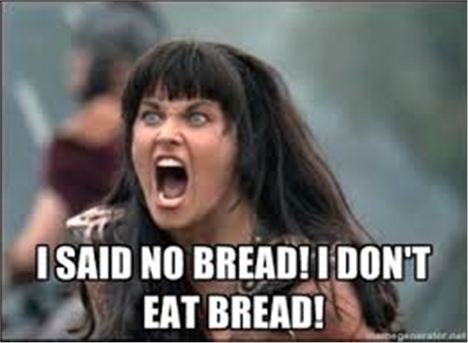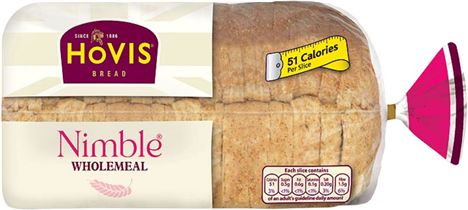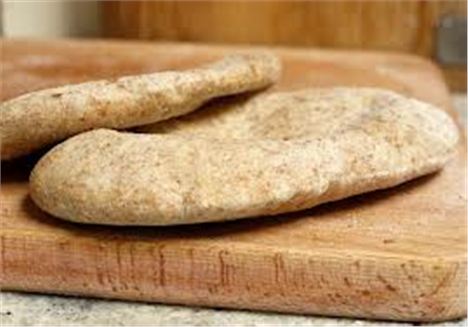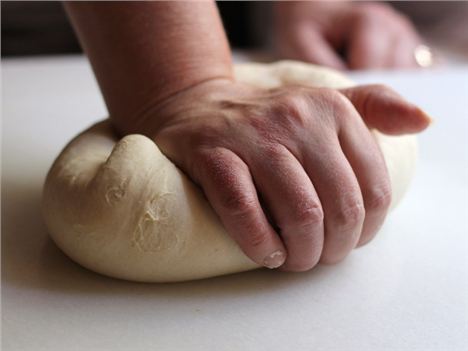ONE of the staples of the British diet, bread has been getting a bad press recently. Fashionable 'low-carb' diets such as Atkins and Low-GI discourage us from filling up on bread and the once popular lunchtime choice of a sandwich or two has given way to wraps, flatbreads and pittas.
Those wanting to lose weight are directed to alternatives such as Weightwatchers or Nimble and the supermarkets are awash with different varieties: white, wholemeal, granary, seeded......the list goes on. But are these new-fangled options really any healthier than the standard white sliced or is bread actually something we should be avoiding altogether?
Gluten
Firstly, for those who suffer from coeliac disease or gluten sensitivity, standard supermarket or bakery bread is a complete no-no. This has been discussed in my previous article What's All The Fuss About Gluten?
Weight loss
For those wanting to lose weight, there is a lot of good evidence to support a low carbohydrate approach: excess dietary carbs are converted by the body into fat, which is then stored, typically around the waist. Foods such as bread, pasta, rice and potatoes, traditionally used to pad out a meal, can also end up padding out our physiques! So limiting these foods may be helpful if you are trying to lose weight but it doesn't necessarily mean that you have to cut bread out altogether.
Specialist 'diet' breads
Some pre-packed breads, such as Nimble or Weightwatchers are specifically promoted as low calorie breads, and therefore, you would assume, supporting weight loss. The Nimble bread is labelled low sugar and low fat and the Weightwatchers as low fat but actually, given that the basic ingredients of bread are flour, water and yeast, you would expect all breads to be low sugar and low fat.
|
|
Nimble Wholemeal Bread (per 100g) |
Weightwatchers Wholemeal Bread (per 100g) |
Tesco Wholemeal Bread (per 100g) |
|
Protein |
12.27g |
9.09g |
11.1g |
|
Carbohydrate |
36.8g |
43.7g |
40.2g |
|
Of which sugars |
2.27g |
3.15g |
2.2g |
|
Fat |
2.7g |
2.8g |
2.4g |
|
Of which saturates |
0.45g |
0.35g |
0.9g |
|
Fibre |
6.8g |
6.6g |
5.7g |
|
Sodium |
0.36g |
0.38g |
0.3g |
If you look at the table, above, which compares two 'diet' wholemeal loaves with a standard supermarket wholemeal loaf, what you find is that the standard loaf is lower in sugar, fat and sodium and so arguably both healthier and better for weight loss than either of the two 'diet' products.
Not only that, but it's cheaper too at 11p per 100g compared with the Nimble at 19p per 100g and the Weightwatchers at 23p per 100g. In fact, the only thing that the 'diet' loaves have going for them is that their slices are smaller (22g and 28.6g respectively for Nimble and Weightwatchers compared with Tesco's 38g slice).
Wraps V slices
Wraps and pitta breads are increasingly popular, partly because they are a great shape for stuffing with a filling without losing the contents. Both are likely to have lower yeast content than bread, with wraps usually being yeast-free. This suits people with a yeast allergy or those who find that too much yeast aggravates digestive problems.
Supermarket bread vs bakery bread
Most of the bread bought in the UK these days comes from supermarkets, rather than from traditional bakers but although they may look and smell very similar, they are actually very different products. Supermarket bread is made using an industrial technique called the 'Chorleywood Process', which produces light and spongy bread in a speeded-up procedure which reduces fermentation time. The process also uses additional ingredients, some of which have been linked to allergic reactions and not all of which are required to be stated on packaging. Bread from traditional bakers contains flour, water, yeast and salt and uses slower fermentation techniques. Have a look at the Real Bread Campaign's website for more information: http://www.sustainweb.org/realbread/
Home-made
Even better than buying bread from a traditional bakery is to have a go at making it yourself. Bread-making machines are now very popular and make the job of baking bread at home a very straightforward process but even if you don't own one of these gadgets, it's actually very easy and enormously rewarding to bake your own bread: you just need a little patience and time to allow the dough to rise. The weekend is a great time to have a go and kneading the dough is actually quite therapeutic! Choose wholemeal flour, which has a better nutritional content than white flour and make sure it's labelled 'strong' as this is what you need for bread making.
The advice given here is not intended to replace medical advice. Always consult your GP if you are concerned about your health.
Clare Jones, BA(Hons), Dip ION, mBANT NT
C & CNHC registered
Nutritional Therapy 07985 166606.
If you would like to make an appointment for a personal nutrition consultation with Clare, please contact her on the above number or visit Clare’s website: www.clarejones-nutrition.co.uk
Follow Clare on Twitter @ClareJonesNutri and Facebookwww.facebook.com/ClareJonesNutritionalTherapy













